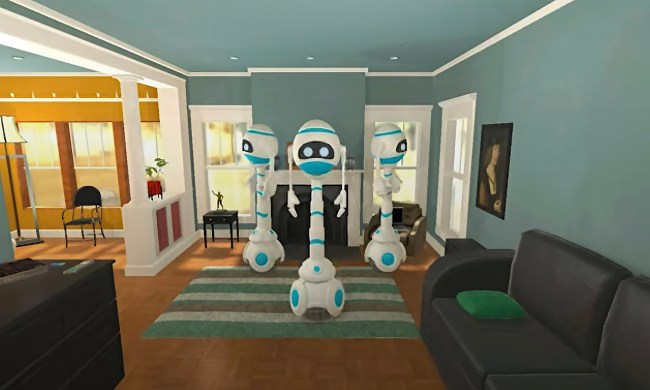
There’s a battle going on in Silicon Valley. At stake: Billions, or even trillions, of dollars for whichever company can find the best possible route to your eyeballs. This advertising war of attrition (ad-trition?) is all about controlling the online world of ads. Everyone from Google to Facebook is tripping over themselves, and pushing over one another, to corner the market on online selling.
But while it’s easy to view the ad battle as being, say, Google vs. Facebook, there’s more to it than that. These two companies are, at least, pursuing the same goal. There’s another party out there that wants to smash the system altogether. To paraphrase Chris Nolan’s The Dark Knight, these are the folks who want to watch the world burn.
Welcome to the ad-blockers.
Ad-blocking has come of age here in 2019. Software that is designed to remove or otherwise alter ads in web browsers and apps has been around for years. But it’s only in the past year or so when mainstream tech giants like Apple have stepped in to implement ad-blocking tech as part of their platforms. As with any war, the other side responded with guerrilla strategies; trying to change the rules of engagement in order to win. Banner ads may be easily blocked through software, but there are other ways to get advertisements in front of users. Efforts to pioneer unskippable ads have ranged from ways to CGI product placement into existing movies through an increased focus on ads that play within podcasts or live radio.
A Shazam for spotting ads
Alexandre Storelli is one person helping to counteract this scourge. An early thirty-something-year-old software developer by day, Storelli has developed an A.I. tool — similar to music-recognizing app Shazam — which uses machine learning to spot audio ads. Called Adblock Radio, this open-source solution can be deployed with relative ease by anyone who wants or needs it.
“Adblock Radio does to audio content what a regular browser ad blocker does to web pages,” Storelli told Digital Trends. “It separates chunks of actual content [such as music and conversation] from advertisements. The user can then choose to remove ads. In podcasts, users will be able to automatically fast-forward during ads. In live radio streams, volume will go down or the player will hop to another station. One can also embed Adblock Radio in a DVR for audio so that fast-forwarding on a radio stream becomes possible.”

This is achieved using a pair of ad detectors that combine their efforts for the finished product. One module analyzes what Storelli calls the “texture of audio.” This refers to characteristics of audio such as speech playing over music and jingles, or certain types of acoustic compression that are designed to catch the listener’s ear. While the style of ads changes over time, he notes that these patterns are universal, making it possible to detect the overwhelming majority of new ads with limited maintenance of the system.
Occasional ads do break through, however, which is where the second module comes into play. This is a crowdsourced database of ads which uses a Shazam-like algorithm to recognize them when they pop up.
Wasting time, destroying Earth
“Some ads are really annoying and disrespectful in my opinion, and many people feel likewise,” Storelli continued. “The most frustrating part is that there is often no way to give money to content creators to have ads removed. Having a background in signal processing from my Ph.D., I decided to give people a way to express their point of view to radio companies, by building something similar to what browser ad blockers did to the internet. The more people cut audio ads, the better the media will understand that this problem needs a solution.”
But what exactly is so bad about ads? While no-one I’ve ever met thrills at the sight of a banner ad, doesn’t an ad-supported internet represent a better solution than having to pay for all the services we use? Storelli acknowledged that this is a “complex debate” with valid arguments on both sides. “The goal of the project is not to sink the radio and podcast ecosystem,” he said. “I, rather, want to help companies develop alternative business models for radio and podcast lovers that do not want ads. Why is it that we have Spotify and Netflix, but that no platform has emerged for ad-free radio and podcasts?”
To Storelli, there are several reasons ads are unethical. “[Ads] attack our weaknesses by hard-wiring default values and desires in our brains,” he explained. “So if we are hungry, we immediately think about a McDonald’s burger, even if we have healthier food at reach. If we do not actively resist it with our force of mind, we fall in the trap and consume poorly. They make us unhappy, by convincing us that our lives are pitiful. We should drink premium coffee to look like movie stars and convince ourselves that we are valuable [as individuals]. But we have always been!” He also notes that this has a detrimental impact on the environment, by setting up social pressures to buy devices and products that we do not need.
Storelli additionally points out that ads waste our time and attention, as well as pushing us to buy products that we cannot afford. “They are actually a very expensive way to fund a media,” he said. “For a company to earn $10 from you with advertising, it will have to convince you to buy maybe $100 of goods. Ad-funded media look free, but they are definitely not. It’s a trick.”
Perceptual ad-blockers
Adblock Radio isn’t perfect. Podcasts increasingly rely on native advertising in which the host reads of a sponsored text. These ads cannot easily be detected by the filter in its current start. In the future, Storelli hopes to be able to identify this kind of advertising by crowdsourcing time-stamps at which unwanted content begins and ends. An alternative technique might use speech recognition software to carry out a semantic analysis. This could function similarly to the keyword spotters used in email spam filters.
For now, both of those approaches remain out of reach. But Adblock Radio represents a fascinating example of the future of what Storelli calls “perceptual ad-blockers.” These ad-blockers look at the world the way that a human does. For instance, work carried out by researchers at Princeton and Stanford Universities uses A.I. to examine rendered pages the way that people do. It is based on the key insight that “ads are legally required to be clearly recognizable by humans.” By increasing the abilities of image-recognizing A.I.s, visual ads could be stopped in their tracks. In an age of augmented reality glasses, imagine a pair of They Live-style specs able to weed out advertising either online or in the physical world. This is just one possibility in the world of the perceptual ad-blockers.
Ultimately, Storelli thinks this is just part of the puzzle. “Ad-blockers are not a solution; they are merely a counter-power for users that are tired of ads,” he said. “The real solution will be to find other ways to fund the media we consume.”
The years to come are going to see the next iteration of this cat-and-mouse battle between the ad sellers and the blockers. Should enough people be willing to ditch ads, the industry will be forced to reimagine its very funding model. The question is: What will its successor look like?


